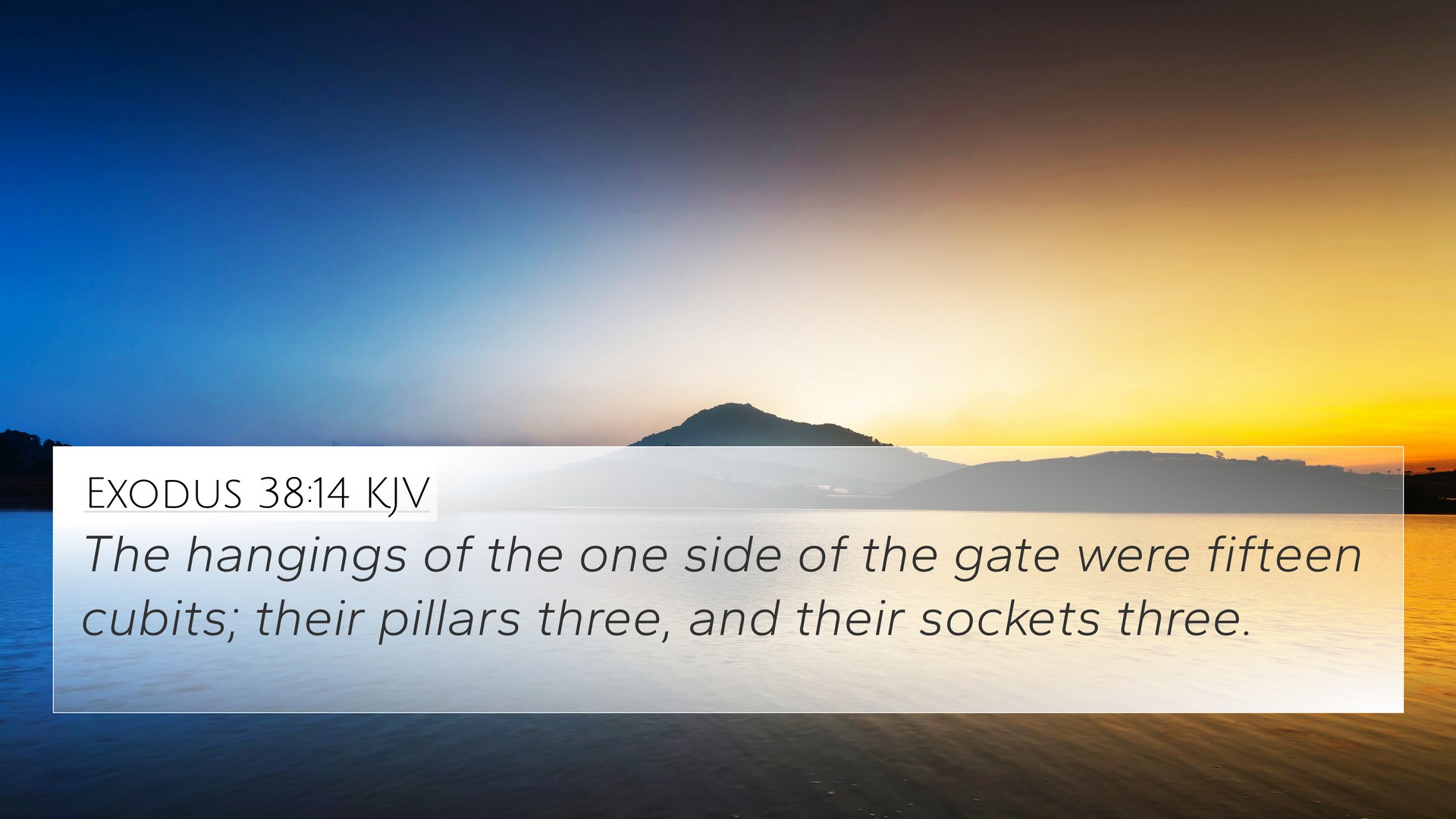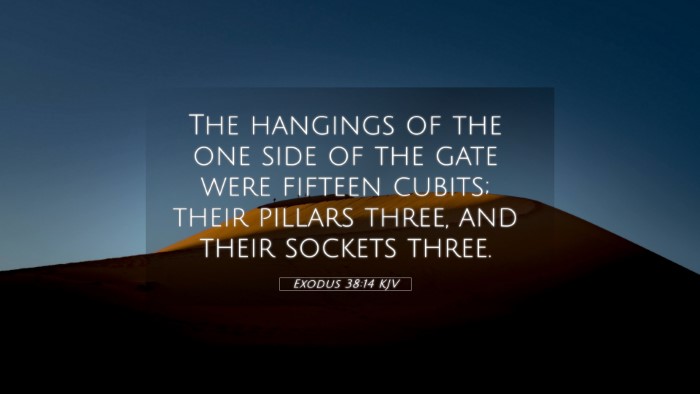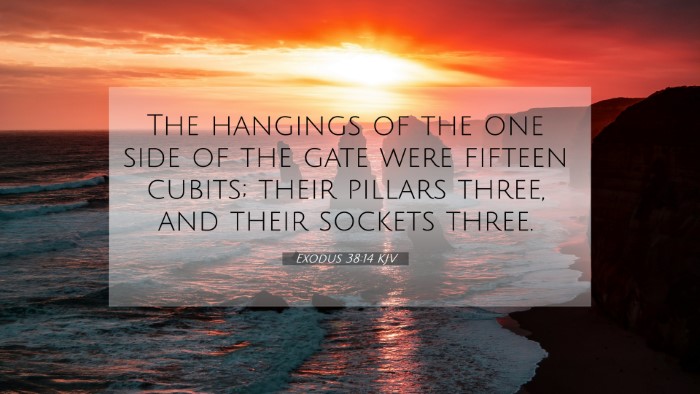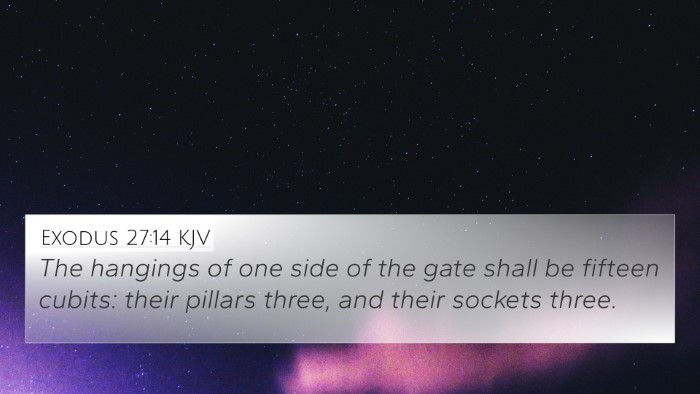Understanding Exodus 38:14
This verse states: “The hangings of one side of the gate were fifteen cubits; their pillars three, and their sockets three.” This verse is part of the description of the tabernacle's structure and its furnishings which carry significant spiritual and practical meaning.
Summary of Insights from Commentaries
Exodus 38:14 provides a detailed account of the tabernacle gates, particularly focusing on the hangings and pillars that formed the entrance. The measurements and materials used are not merely architectural details but symbolize deeper spiritual truths regarding access to God.
- Matthew Henry's Commentary:
Henry emphasizes that the detailed instructions given in the law illustrate God's orderliness and holiness. The hangings represent the distinction between the holy and the common, emphasizing the need for reverence and humility when approaching God.
- Adam Clarke's Commentary:
Clarke observes that the measurements serve a dual purpose: they establish a physical boundary for the sanctuary and point to the way in which God's presence is approachable yet requires diligence in holiness. The pillars signify strength and stability, reminding believers of the steadfastness of God's covenant.
- Albert Barnes' Notes:
Barnes notes that the physical description of the gate reveals its importance. The number of pillars and sockets (three) signifies completeness and divine order. This provides a contrast with the chaos of the world and offers insight into the nature of divine worship.
Key Themes in Exodus 38:14
From the commentary reflections, several key themes emerge that not only relate to this verse but extend across the biblical narrative:
- Access to God:
The hanging curtains serve to delineate the sacred space, reminding believers of the separation between God and man, which is a theme seen throughout Scripture as in Hebrews 9:8.
- Holiness and Reverence:
The precise measurements illustrate the necessity of approaching God with reverence as noted in Leviticus 10:3.
- Divine Order:
This reflects God’s order in creation and worship, as seen in 1 Corinthians 14:40 where Paul admonishes the church to do all things decently and in order.
Bible Cross References
Exodus 38:14 is connected to several other verses throughout the Bible that enhance understanding through cross-referencing:
- Exodus 26:1: Description of the tabernacle curtains.
- Exodus 36:37-38: Details about the gates and their hangings.
- Hebrews 9:1-3: Discusses the symbolism of the tabernacle and its elements.
- Matthew 27:51: The moment when the veil of the temple was torn, symbolizing God's accessibility through Christ.
- Revelation 21:22: Refers to the heavenly temple where God dwells among men.
- 1 John 1:5: God’s nature of light, hence calling for purity in worship.
- Psalm 100:4: Entering His gates with thanksgiving, embodying reverence in approach.
Thematic Connections Between Bible Verses
The theme of divine access and worship extends beyond Exodus, making connections across both the Old and New Testaments. For instance, the sacrificial system outlined in Exodus ultimately points to Christ’s ultimate sacrifice in the New Testament, where the curtain is torn, allowing direct access to God.
Tools for Bible Cross-Referencing
For those delving deeper into biblical study, using tools for Bible cross-referencing, such as a Bible concordance or a cross-reference Bible study guide, can greatly enhance understanding. These resources facilitate the discovery of relations between different scriptural texts—a vital tool in uncovering theological truths brought forth in the scriptures.
Conclusion
Exodus 38:14, while a technical description, offers profound insights into the nature of worship and God's presence among His people. By utilizing cross-referencing techniques, believers can identify connections between this verse and others, enriching their understanding of the Bible's overarching narrative of redemption and holiness.



